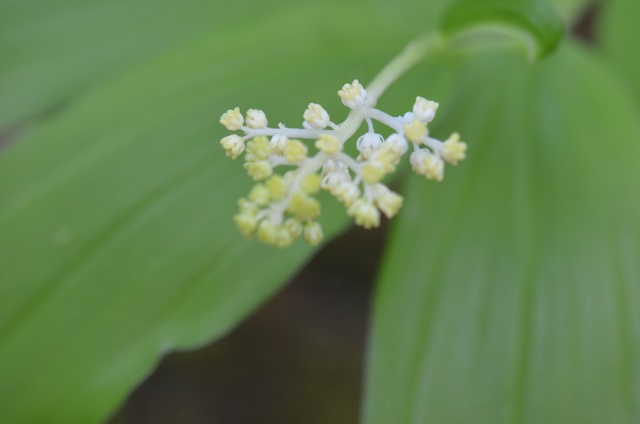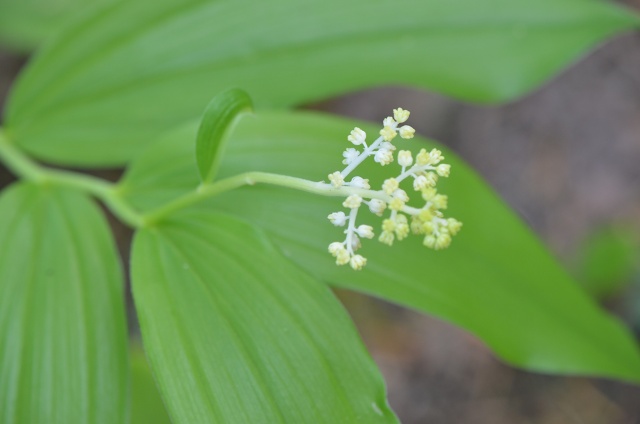Note true Solomon's seal has flowers joined where the leaves join the stem.
False Solomon's seal makes flower on the top of the plant.
False Solomon's seal is edible, but care must be exercised.
The young shoots, while still tender and stripped of their leaves,
can be simmered in water and eaten. Their delicate flavor is somewhat reminiscent of asparagus.
Although the young shoots are edible, the plant becomes too fibrous and bitter to enjoy after
it completes flowering and seed setting stages.
The Ojibwa Indians harvested the roots of this plant and cooked them in lye water overnight to
remove the bitterness and neutralize their strong laxative qualities.
This plant should be consumed in moderation, as it can act as a strong laxative in sensitive individuals.
A poultice made from the roots of this plant was used as an effective treatment for sunburns by
American Indians.
The roots of this plant were often dried and then smoked by several Eastern Native American tribes
as a treatment for hyperactivity in children and emotional depression.
The plant was also used by Native Americans as a cough suppressant.
When young, Maianthemum racemosum may closely resemble members of the genus Veratrum,
a highly toxic plant to which it is distantly related.
Consequently, this plant should not be consumed unless identification is positive. (from Wikipedia.com)
This plant is closely related and somewhat similar to Solomon's seal.
Solomon's seal is alleged to have many medicinale qualities
Widely used as food in China. Leaves, stems, and rhizomes are used raw or cooked and served as a side dish with meat and rice. The rhizomes of two local species are eaten with chicken's or pig's feet during festivals. The rhizomes are used to make tea or soaked in wine or liquor to flavor the beverages. They are also fried with sugar and honey to make sweet snacks.
The starchy rhizomes can be dried, ground, and added to flour to supplement food staples.
The rhizome can be pulped, boiled, strained, and thickened with barley flour to
make a sweet liquid seasoning agent called tangxi.
At times, people in China have relied on as a famine food.
The shoo
One explanation for the derivation of the common name "Solomon's seal" is that the roots bear depressions which resemble royal seals.
Another is that the cut roots resemble Hebrew characters.









